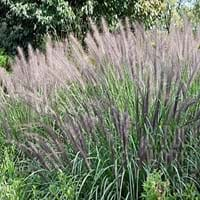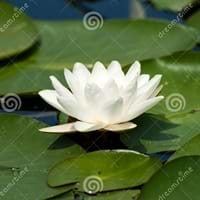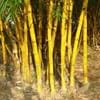Life Span
Perennial
Perennial
Origin
Eastern Asia, Australia
Europe, Russia/Siberia, Northern Africa, Asia
Types
Not Available
Not Available
Habitat
Grassland, open forests, wastelands, Wet lands
Ponds
USDA Hardiness Zone
5-9
5-9
Sunset Zone
3a, 3b, 4, 5, 6, 7, 8, 9, 10, 11, 12, 13, 14, 15, 16, 17, 18, 19, 20, 21, 22, 23, 24
21,22
Habit
Clump-Forming
Not Available
Minimum Height
Not Available
Minimum Width
Not Available
Flower Color
Ivory, Rose, Tan
White, Yellow, Ivory
Flower Color Modifier
Bicolor
Bicolor
Fruit Color
Sandy Brown, Tan
Green
Leaf Color in Spring
Green, Light Green
Green, Dark Green
Leaf Color in Summer
Light Green
Green, Dark Green
Leaf Color in Fall
Green, Light Green, Tan
Green, Dark Green
Leaf Color in Winter
Tan, Sandy Brown
Not Available
Leaf Shape
Conduplicate
Circular
Plant Season
Spring, Summer, Fall, Winter
Spring, Summer
Sunlight
Full Sun, Partial Sun
Full Sun, Partial Sun
Type of Soil
Clay, Loam, Sand
Loam, Sand
The pH of Soil
Acidic, Neutral, Alkaline
Neutral
Soil Drainage
Well drained
Poorly Drained
Bloom Time
Summer, Late Summer, Early Fall, Fall, Late Fall
Late Spring, Early Summer, Summer, Late Summer
Tolerances
Drought
Wet Site
Where to Plant?
Container, Ground, Pot
In Water
How to Plant?
Divison, Seedlings
Seedlings
Plant Maintenance
Medium
Medium
Watering Requirements
occasional watering once established
Plant grows in water
In Summer
Lots of watering
Lots of watering
In Spring
Moderate
Moderate
In Winter
Average Water
Average Water
Soil pH
Acidic, Neutral, Alkaline
Neutral
Soil Type
Clay, Loam, Sand
Loam, Sand
Soil Drainage Capacity
Well drained
Poorly Drained
Sun Exposure
Full Sun, Partial Sun
Full Sun, Partial Sun
Pruning
Remove damaged leaves, Remove dead branches, Remove dead leaves
Remove damaged leaves, Remove dead branches, Remove dead leaves
Fertilizers
All-Purpose Liquid Fertilizer
All-Purpose Liquid Fertilizer
Pests and Diseases
eyespot, Leaf spot, Rust
Red blotch
Plant Tolerance
Drought
Drought
Flower Petal Number
Single
Single
Foliage Texture
Fine
Coarse
Foliage Sheen
Glossy
Glossy
Aesthetic Uses
Borders, Ground Cover
Showy Purposes
Beauty Benefits
Not Available
Not Available
Environmental Uses
Air purification
Air purification
Medicinal Uses
Not Available
Anaphrodisiac, Anodyne, Antiscrophulatic, Astringent
Part of Plant Used
Seeds
Root, Seeds
Other Uses
Used like flour
Not Available
Used As Indoor Plant
No
No
Used As Outdoor Plant
Yes
Yes
Garden Design
Dried Flower / Everlasting, Bedding Plant, Container, Cutflower, Feature Plant, Foundation, Groundcover, Mixed Border, Rock Garden / Wall
Water Gardens
Botanical Name
PENNISETUM alopecuroides
NYMPHAEA alba
Common Name
Chinese Fountaingrass, Fountaingrass
European White Waterlily, Nenuphar, White Lotus
In Hindi
Fountaingrass
Nymphaea alba
In German
Fountaingrass
Weiße Seerose
In French
Fountaingrass
Nénuphar blanc
In Spanish
Fountaingrass
Nymphaea alba
In Greek
Fountaingrass
Nymphaea alba
In Portuguese
Fountaingrass
Nymphaea alba
In Polish
Fountaingrass
Grzybienie białe
In Latin
Fountaingrass
Nymphaea alba
Phylum
Magnoliophyta
Vascular plant
Class
Liliopsida
Magnoliopsida
Order
Cyperales
Nymphaeales
Family
Poaceae
Nymphaeaceae
Genus
Pennisetum
Nymphaea
Clade
Angiosperms, Commelinids, Monocots
Angiosperms
Tribe
Paniceae
Not Available
Subfamily
Panicoideae
Cassidinae
Number of Species
Not Available
Not Available
Properties of Fountaingrass and Nymphaea Alba
Wondering what are the properties of Fountaingrass and Nymphaea Alba? We provide you with everything About Fountaingrass and Nymphaea Alba. Fountaingrass doesn't have thorns and Nymphaea Alba doesn't have thorns. Also Fountaingrass does not have fragrant flowers. Fountaingrass has allergic reactions like Pollen and Nymphaea Alba has allergic reactions like Pollen. Compare all the properties and characteristics of these two plants. Find out which of these plant can be used as indoor plant. If you are interested to decorate your house and garden, find out aesthetic uses, compare them and select the plant which will beautify your surrounding. Along with beautification, try comparing medicinal and edible uses of Fountaingrass and Nymphaea Alba and you can choose the plant having best and most benefits.
Season and Care of Fountaingrass and Nymphaea Alba
Season and care of Fountaingrass and Nymphaea Alba is important to know. While considering everything about Fountaingrass and Nymphaea Alba Care, growing season is an essential factor. Fountaingrass season is Spring, Summer, Fall and Winter and Nymphaea Alba season is Spring, Summer, Fall and Winter. The type of soil for Fountaingrass is Clay, Loam, Sand and for Nymphaea Alba is Loam, Sand while the PH of soil for Fountaingrass is Acidic, Neutral, Alkaline and for Nymphaea Alba is Neutral.
Fountaingrass and Nymphaea Alba Physical Information
Fountaingrass and Nymphaea Alba physical information is very important for comparison. Fountaingrass height is 60.00 cm and width 60.00 cm whereas Nymphaea Alba height is Not Available and width Not Available. The color specification of Fountaingrass and Nymphaea Alba are as follows:
Fountaingrass flower color: Ivory, Rose and Tan
Fountaingrass leaf color: Green and Light Green
Nymphaea Alba flower color: White, Yellow and Ivory
- Nymphaea Alba leaf color: Green and Dark Green
Care of Fountaingrass and Nymphaea Alba
Care of Fountaingrass and Nymphaea Alba include pruning, fertilizers, watering etc. Fountaingrass pruning is done Remove damaged leaves, Remove dead branches and Remove dead leaves and Nymphaea Alba pruning is done Remove damaged leaves, Remove dead branches and Remove dead leaves. In summer Fountaingrass needs Lots of watering and in winter, it needs Average Water. Whereas, in summer Nymphaea Alba needs Lots of watering and in winter, it needs Average Water.





